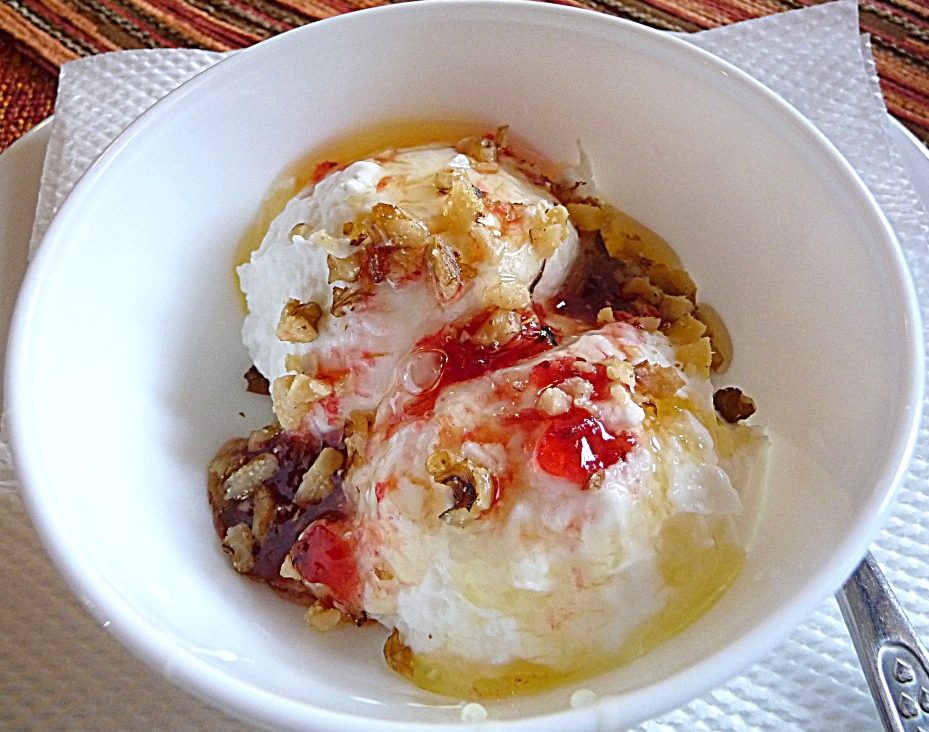You can find yoghurt everywhere in Bulgaria. It is lined up in the supermarket refrigerators, dolloped on falafel wraps, slathered on moussaka (traditional Bulgarian dish with minced meat). It is the basis of traditional Bulgarian dishes such as tarator, a cold soup made of yoghurt, water, cucumber, walnuts and herbs; and snezhanka, a salad consisting of yoghurt, cucumbers, garlic and dill. People sip yoghurt drinks in the streets and dip fried courgette slices into yoghurt in eateries.
Yoghurt is a food produced by bacterial fermentation of milk. The bacteria used to make yogurt are known as „yogurt cultures“. Fermentation of lactose by these bacteria produces lactic acid, which acts on milk protein to give yogurt its texture and characteristic tart flavor. Cow’s milk is commonly available worldwide, and, as such, is the milk most commonly used to make yogurt. Milk from water buffalo, goats, ewes, mares, camels, and yaks is also used to produce yogurt where available locally. Milk used may be homogenized or not (milk distributed in many parts of the world is homogenized); both types may be used, with substantially different results.
Bulgarian scientist was the first one, who discovered the composition of yoghurt. Dr Stamen Grigorov, who was studying in the Medical University of Geneva, returned from the region of Trun with a traditional clay pot, containing home-made yoghurt. He examined it, as part of his studies and after a year he identified the essential bacterium that caused milk to ferment and turn into yoghurt. The microorganism became known as lactobacillus bulgaricus. The name of the bacteria shows the special connection that the Bulgarians have with the yoghurt In honour of his discovery, the Trun village of Studen Izvor, where Grigorov was born, now houses the only yoghurt museum in the world.


